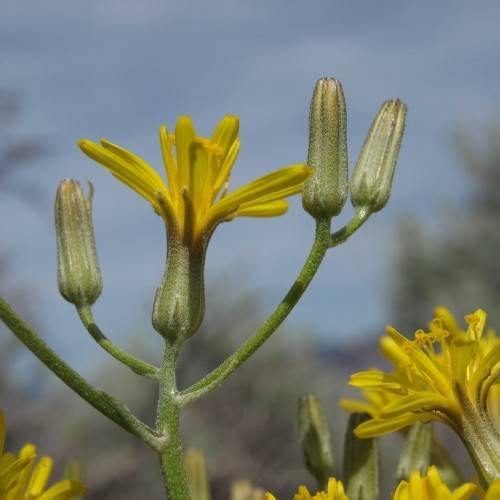
Elegant Hawksbeard
Askellia elegans
Watering:
Frequent
Hardiness Zone:
Sun:
full sun
Fruits:
Fruits Ready In
Leaf:
Yes
Growth Rate:
Low
Drought Tolerant:
Yes
Salt Tolerant:
Yes
Invasive:
Yes
Care Level:
Medium
watering
White Milkweed should be watered when the top inch or 2 of soil is dry. Water the soil thoroughly until the moisture has been absorbed. Watering deeply and less frequently is often preferred to frequent or shallow watering. Generally, this species should be watered about once a week during the summer months. In the cooler months average water requirements may be reduced to every 2 weeks or longer, depending on rainfall and temperatures.
sunlight
White Milkweed (Asclepias variegata) should be grown in full sunlight. It requires a minimum of 4 to 6 hours of direct sunlight each day. During the summer, full sun exposure is required for the best bloom display of this plant species. On particularly hot summer days, it is recommended to provide protection from intense afternoon heat with light, filtered shade. During the winter months, depending on your climate, White Milkweed will still need some sun exposure to keep its vibrant colour.
pruning
White Milkweed plants should be pruned during late winter or early spring. This will help promote the growth of new shoots which will flower during the late summer. It is important to be careful when pruning to avoid damaging the plant, as it can be killed by hard pruning. The amount of pruning can vary depending on the size of the plant. Smaller plants should only have light pruning done, while larger plants may require more aggressive sculpting and cutting back to promote new growth. It is important to make sure that no more than 1-third of the plant’s total height is removed during each pruning session to avoid stressing the plant and stunting growth.
